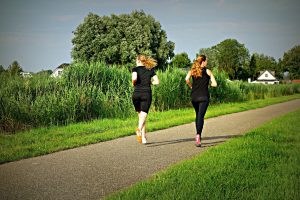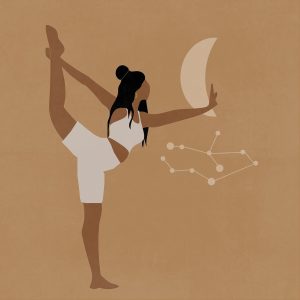
Thyroid problems involve issues with the thyroid gland, which regulates metabolism through hormone production. Common conditions include hypothyroidism (underactive thyroid with symptoms like fatigue and weight gain), hyperthyroidism (overactive thyroid causing weight loss and anxiety), thyroiditis (inflammation of the gland), and goiter (enlargement often due to iodine deficiency). Yoga offers benefits for thyroid health by reducing stress, improving circulation to the gland, balancing hormones, detoxifying the body, and boosting the immune system, which is important for autoimmune disorders. Certain yoga poses can also stimulate digestion and improve metabolism, often affected by thyroid issues. Regular yoga practice can enhance mood, alleviate anxiety, and aid in sleep disorders linked to thyroid issues. It provides a gentle form of exercise beneficial for maintaining a healthy weight and physical fitness without excessive strain. To support thyroid health effectively, it’s important to combine yoga with guidance from a healthcare provider for comprehensive management. Here are 4 yoga poses to practice for thyroid problems:-
- Sarvangasana, or Shoulder Stand- It is a yoga pose that stimulates the thyroid gland, aiding in hormone regulation. To perform it, lie on your back with arms at your sides and legs extended. Gradually lift your legs toward the ceiling while keeping them straight, and support your lower back with your hands as you raise your hips. Align your shoulders, neck, and head with the ground, ensuring your weight is on your shoulders. Hold the position for 20-60 seconds, breathing deeply. Then, lower your legs and hips back down while supporting your back. For extra support, use a folded blanket beneath your shoulders, and avoid this pose if you have neck issues, high blood pressure, or eye problems. It’s advisable to practice yoga under a trained instructor’s guidance, particularly for inversion poses, to maintain proper alignment and technique.
- Halasana, or the Plough pose- The inversion pose stimulates the thyroid and parathyroid glands, helping to regulate hormone levels. To perform this pose, lie flat on your back with arms at your sides and legs straight. Slowly lift your legs towards the ceiling, keeping them together and straight. Support your lower back with your hands, lifting your hips off the floor and bringing your feet towards the ground behind you. Aim to touch your toes to the ground while keeping your legs straight. Hold the pose for 20-60 seconds, focusing on your breath and keeping your neck relaxed. To exit, roll your spine back to the floor and lower your legs gradually. For added support, you can place a folded blanket under your shoulders. Avoid this pose if you have neck issues, high blood pressure, or are pregnant.
- Matsyasana (Fish Pose)- Matsyasana, or Fish Pose, is a yoga position that helps open the chest and throat and stretches the back and neck while stimulating the thyroid gland. To perform the pose, lie on your back with your legs extended and arms at your sides. Press your forearms and elbows into the floor to lift your chest, tilting your head back to place the top of your head lightly on the ground, creating a deep arch in your back. Keep your legs active and maintain the pose for 20-60 seconds while breathing deeply. To exit, lift your head and chest off the ground and lower back to the starting position. This pose should be avoided by individuals with neck problems, back injuries, or those who are pregnant. A folded blanket or bolster can be used for support if needed.
- Bhujangasana, or Cobra pose- Bhujangasana, or Cobra Pose, is a key yoga position that stretches the chest and strengthens the lower back. To perform it, lie face down with your legs extended and the tops of your feet on the ground. Place your hands under your shoulders with elbows close to the body. Inhale and gently press your hands into the floor to lift your chest and head while keeping your elbows slightly bent and shoulders relaxed. Hold the position for 15-30 seconds, breathing deeply. To exit, exhale lower your chest, and head back to the ground. Avoid this pose if you have severe back pain, carpal tunnel syndrome, or recent abdominal surgery, and consider using a folded blanket for extra support if needed.
-Triparna







